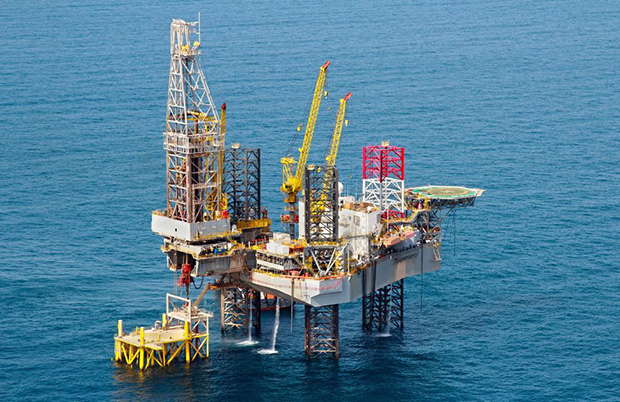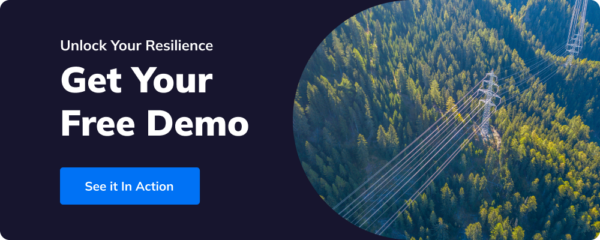TL;DR:
- Weather disruptions can have a significant impact on offshore oil rig operations, costing up to $500,000 a day.
- Hurricanes pose a major threat, causing shutdowns, damages, and even loss of life.
- High winds can damage rig structures and equipment, while extreme cold can lead to power outages and slower drilling pace.
- Lightning strikes can halt operations, causing extensive damage and supply chain losses.
- Weather intelligence tools can help mitigate risks by providing accurate and timely forecasts and enabling proactive decision-making
Nearly every year, a hurricane hits the Gulf Coast and causes massive damage to energy infrastructure, negatively impacting offshore energy and exposing it to the risks of weather.
2023 saw a record-breaking hurricane season, with this hurricane season ranking 4th for most-named storms in a year, along with missed rapidly intensifying storms hitting the coast of Mexico.
But while it’s possible to prepare in advance for incoming hurricanes and other extreme weather events, the weather we deal with daily can also put operations at risk. While less likely to grab headlines, damage from everyday weather can hit your bottom line.
That’s where advanced tech can support operations. With the help of weather intelligence tools, leaders can make a difference in offshore energy operations.
This blog will cover the impact of weather on oil rigs and how AI-backed weather intelligence and spaced-based forecasting can power your decision-making to keep teams safe, minimize equipment damage, and keep businesses on track.
The Impact of Weather on Oil Rigs

In the oil and gas industry, weather plays a huge role in the success of offshore operations. The offshore energy risks are high, and operators must be aware of any potential weather-related impacts.
Doing so requires a proactive approach to managing weather-related disruptions. To manage it, oil rig operators must obtain accurate and timely forecasts from reliable sources.
There’s a lot at stake; reports show that operating an oil rig can cost up to $500,000 a day.
When weather is severe enough to shut down operations, business leaders must be able to make strategic decisions that impact that bottom line.
Weather Disruptions in Oil Rig Operations
When we think about disruptive weather, we imagine hurricanes and intense storms, but unpredictable ocean currents, wind speed, lightning strikes, heavy fog, and even rain can halt operations on an oil rig and prevent offshore drilling from continuing.
Hurricanes
Hurricanes pose remarkable threats to offshore oil installations because of their violent winds and high waves that shut down operations, causing costly damages and leading to lost lives.
If we look back to Hurricane Katrina in 2005, we can understand the true impact of hurricanes on drilling. Hurricane Katrina was a category 5 Atlantic storm and the costliest natural disaster in U.S. history. It disrupted around 95% of crude production in the Gulf Coast region. According to ISHN, “the storm damaged 457 pipelines and destroyed more than 100 platforms. About 20 mobile drilling rigs experienced total failure, including nearly a dozen newer semi-submersible floating drilling units.”
Hurricanes are the costliest disasters to deal with, and offshore energy companies should be equipped to mitigate these risks.
High Winds
Arguably one of the most damaging aspects of Gulf Coast weather systems, high winds can directly affect an oil rig structure’s stability. They can stress integral components, leading to accidents or even catastrophic failure if not appropriately managed. Especially if the wind hits a rig from the side, pipes can be damaged with only a 35-mile-per-hour wind at a specific angle.
Plus, severe winds are taxing on drilling equipment due to an oil rig’s high point of gravity that makes it easy to move. High winds will often also carry debris which can strike crew members and their equipment.
Extreme Cold
Extreme cold is another weather disruptor to the offshore energy industry. Intense cold can stop operations at refineries because of power outages and the effect of the low temperatures on operating units.
Utilization rates normally run around 90% but drop to a low of 70% due to the cold weather and maintenance. Refineries also need extra equipment, such as heating units at drill sites during extremely cold conditions, while drilling pace tends to slow.
Lightning Risk
Lightning strikes, much like hurricanes, present challenges to offshore oil. Their sudden, intense electricity can abruptly halt operations, leading to substantial damage and even harm to lives.
Electricity can cause major damage to infrastructure, oil rigs, pipelines, storage tanks, and refineries. The costs of these repairs, replacing equipment, and unforeseen downtime can reach millions and billions of dollars very quickly. These disruptions can lead to product and supply chain losses as well.
It’s crucial for offshore energy business leaders to understand the impact of lightning and how they can be proactive to these sudden weather events.
Being Proactive About Weather in Offshore Energy
This is where weather intelligence comes in. Instead of waking up each morning to check the forecast, a weather intelligence platform can take your existing weather parameters and create an easily understood dashboard that highlights which assets are at risk from weather.
Is a storm about to hit your refinery on the Texas coast?
That location will be flagged in red and you can quickly scan to see why.
This enables you to see at a glance what actions need to be taken, at which locations, and by which teams. Instead of figuring out whether a forecast is going to impact your business, you already know.
Weather Intelligence for Offshore Energy
With the increase in extreme weather, managing assets—especially aging assets—has become even more of a challenge. It’s important to be able to plan operations around weather considerations so you can quickly make decisions. For example, having an early warning about temperature changes enables you to better allocate staff to secure assets and even suspend operations if necessary.
Rather than struggling to send out an email to the team at that specific location, you can set up alerts to notify the right team to take the exact actions you need — fast.
While most energy companies fully understand the risks of extreme to everyday weather events, not every team is able to make rapid decisions when the weather conditions become risky.
With weather intelligence, you can act quickly and decisively, creating a serious differentiator for your business.


















